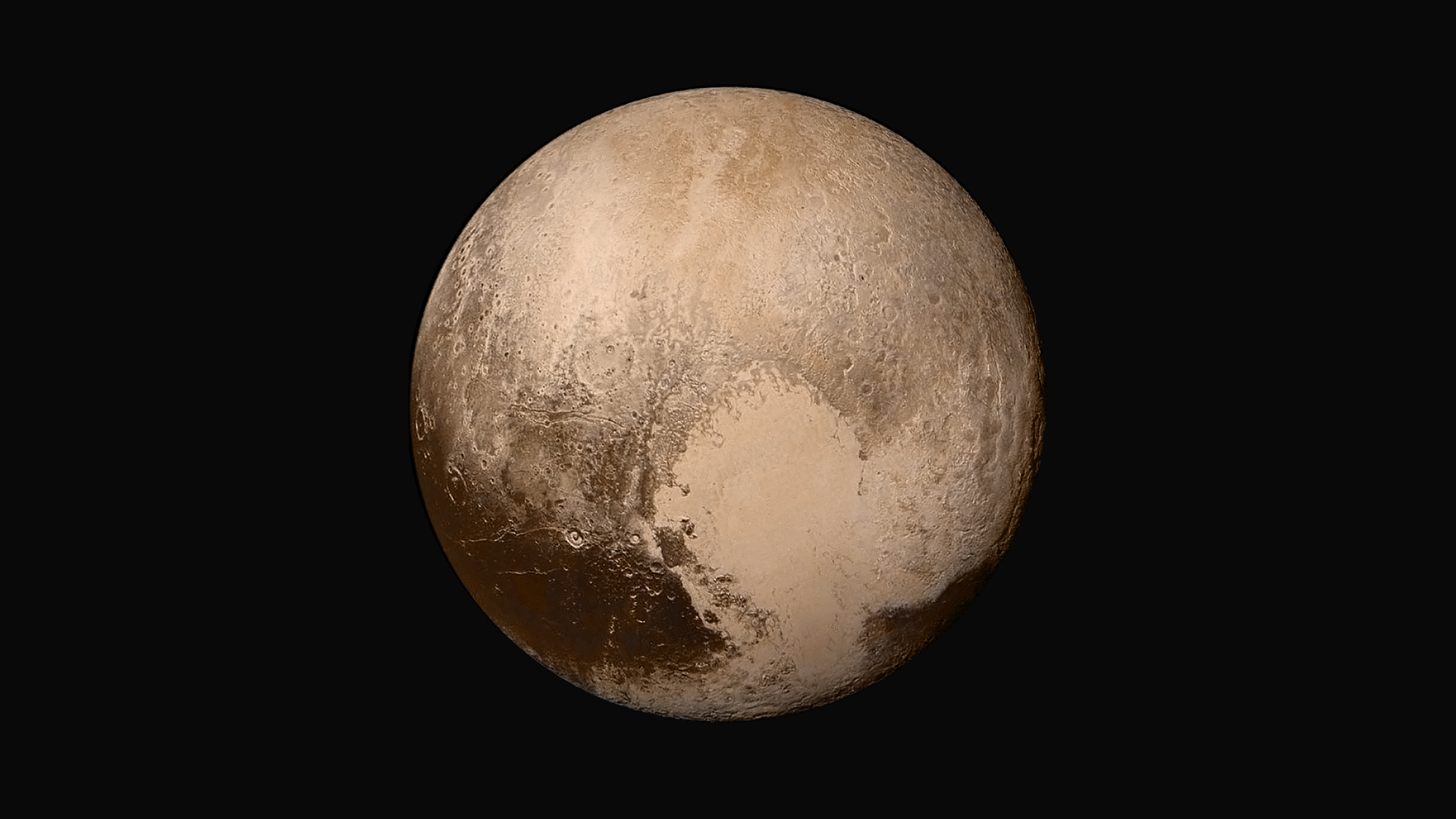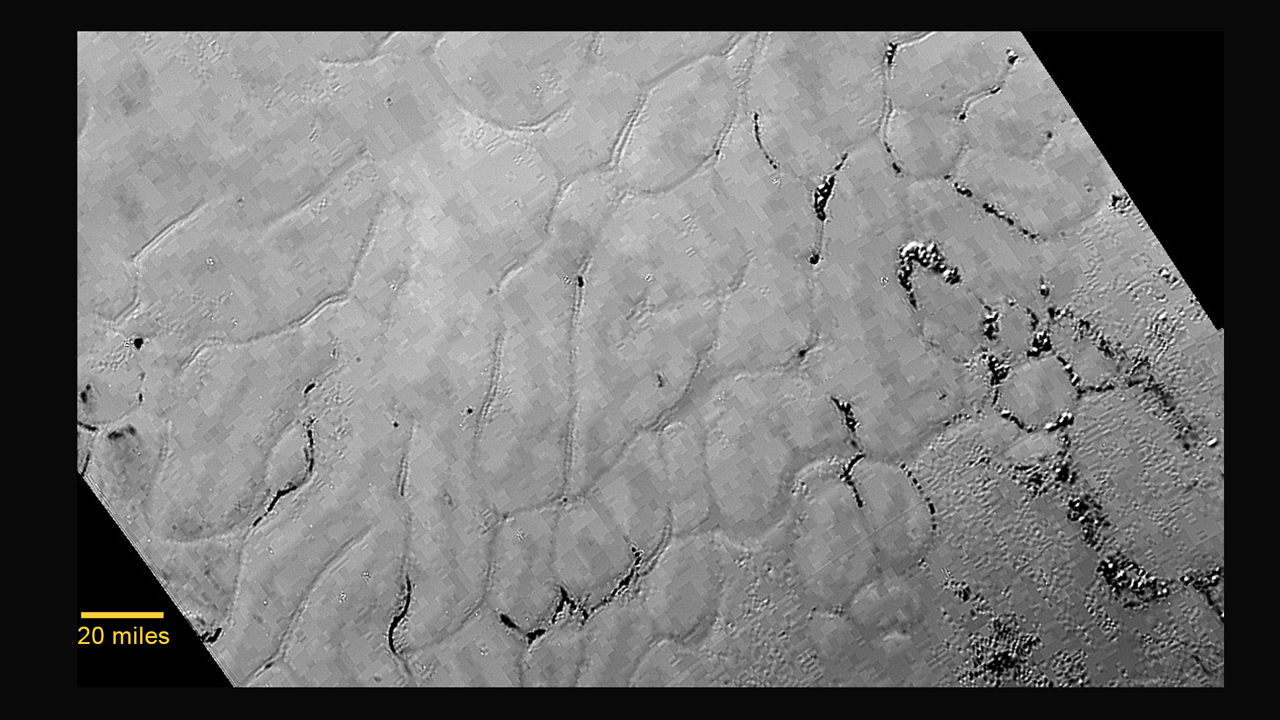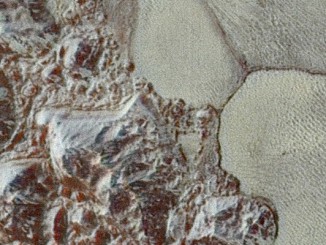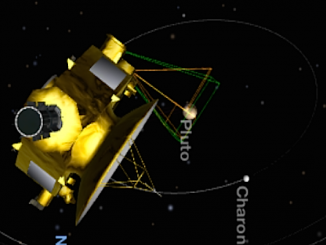
The first images from the New Horizons spacecraft since late July will come back to Earth on 5 September, and scientists are salivating over what the new pictures will reveal about Pluto.
Only about 5 percent of the 50 gigabits of data New Horizons collected during its nine-day encounter with Pluto has made it back to Earth, said Alan Stern, the mission’s principal investigator from the Southwest Research Institute.
“Ninety-five percent of all the data are still on the spacecraft,” Stern said Tuesday. “All the best images are still on the spacecraft, all the high-resolution mapping, almost all the high-resolution composition mapping, the vast majority of radio occultation data are still on spacecraft, [along with] observations of the small moons and Charon.”
Only seven close-up images of Pluto from New Horizons’ sharp-eyed telescopic camera have been downlinked to Earth, and those files were compressed to expedite their transmission back home.
The faraway New Horizons spacecraft, now more than 4.8 billion kilometres (3 billion miles) from Earth, can only send back data at a rate of about 2 kilobits per second, a fraction of the speed of dial-up Internet. It will take more than a year for the robotic emissary to broadcast all its measurements, including hundreds of images, to eager scientists on the ground.
“Almost everything is still on the spacecraft, so we have just sampled this dessert with a few days of intensive download right after the flyby,” Stern said in a presentation Tuesday to a NASA-sponsored group of planetary scientists focused on the outer solar system.
New Horizons spent the last six weeks beaming back data on the plasma and dust environment it encountered around Pluto, crucial measurements that will help piece together the distant world’s workings and place in the solar system.
During its 14 July flyby, the mission discovered a vast Texas-sized ice plan informally named Sputnik Planum. Shaped ice blocks — called polygons by mission scientsts — make up the frozen, craterless terrain, leading geologists to believe the ice field formed less than 100 million years ago, and may still be changing today.
Data stored on New Horizons’ recorders include much higher-resolution views of Sputnik Planum, along with spectral readings that will reveal what types of ices comprise the ice field. The information will help narrow down the age of Sputnik Planum, which tapers toward a boundary with rugged mountains of water ice in the north.
The polygons in Sputnuk Planum may form from slow bubbling driven by a mysterious underground heat source. Scientists want to know if there is a liquid ocean underneath the ice sheet, which is mainly composed of nitrogen, methane and carbon monoxide ices at temperatures near minus 391 degrees Fahrenheit.

The best images of Sputnik Planum on the ground show the region with a resolution of about 400 metres (1,300 feet), but New Horizons’ black-and-white camera took pictures with resolutions as high as 70 metres (230 feet), good enough to see something as small as the ponds in New York City’s Central Park.
The camera also captured images in stereo pairs — viewing the same place on Pluto from slightly different angles — to allow scientists to get an idea of the topography.
“The polygons may be related to some sort of thermal convection,” Stern said. “We will see. We will know a lot more about this, and actually get 3D imagery to know what’s higher and what’s lower before the year is out.”
The next set of Pluto images are due to arrive on Earth around 5 September, according to William McKinnon, a planetary geologist at Washington University in St. Louis who works on the New Horizons mission.
Scientists have a wish list of things they are eager to see once the photo pipeline resumes.
“There is so much stuff on-board that I just cannot wait to see,” said Cathy Olkin, New Horizons’ deputy project scientist from the Southwest Research Institute. “One of the things I’m really looking forward to the most is our high-resolution scan that we took of Pluto with the LEISA instrument … it’s the infrared spectrometer.
“Being able to get high-resolution infrared spectroscopy across the surface of Pluto to map those ices and to see what other minor species might be there, that we couldn’t detect when we’re looking at Pluto as a point of light from Earth,” Olkin said Wednesday in a Google Hangout hosted by the Kavli Foundation. “That’s one I’m really looking forward to getting down.”
Richard Binzel, a New Horizons co-investigator based at MIT, said he is waiting to see observations of Pluto’s night side made by the spacecraft after the flyby. Scientists hoped sunlight reflected by Pluto’s moon Charon would dimly illuminate the south pole’s ice cap, which is locked in a dark, century-long winter.
New Horizons also got close-up views of Charon on its way by Pluto.
The plutonium-powered space probe, about the size of a baby grand piano, sped by Pluto at 49,900 km per hour (31,000 mph) at a range of 12,400 kiolmetres (7,700 miles). It approached within about 29,000 kilometres (18,000 miles) from Charon.
Only a handful of close-up views of Charon, which is more than half the size of Pluto at (1,270 kilometres) 790 miles acrss, have been returned from New Horizons so far. The images revealed giant chasms bigger than the Grand Canyon, a patch of puzzling dark material at its north pole and a sunlit hemisphere with few craters.
“I want to see those global high-resolution uncompressed images of Charon and really see where these big cracks have flowed out onto the surface, and maybe get some composition on what those flows might have been,” said Michael Brown, an astronomer at the California Institute of Technology who specializes in studying the Kuiper Belt, a ring of mini-worlds at the outer edge of the solar system where Pluto resides.
Brown discovered the dwarf planet Eris, an object more massive than Pluto but not quite as big, in 2005. The discovery prompted the International Astronomical Union’s decision in 2006 to demote Pluto into a new class of worlds called dwarf planets.
Brown said observations of Charon could help scientists learn about many other similar-sized objects in the Kuiper Belt.
“I think that’s going to tell us a lot about the mid-sized objects around the Kuiper Belt,” Brown said in Wednesday’s Google Hangout. “There are many, many Charon-like objects out there, and I’d like to learn more about all of them by looking at those images.”
Email the author.
Follow Stephen Clark on Twitter: @StephenClark1.
 Inside the magazine
Inside the magazine
There is a 10-page special report on the New Horizons historic Pluto fly-by in the September 2015 issue of Astronomy Now. See inside this issue. Available from WHSmith and all good newsagents.
Never miss an issue of the UK’s biggest and longest running astronomy magazine by subscribing. Also available for iPad/iPhone and Android devices.



